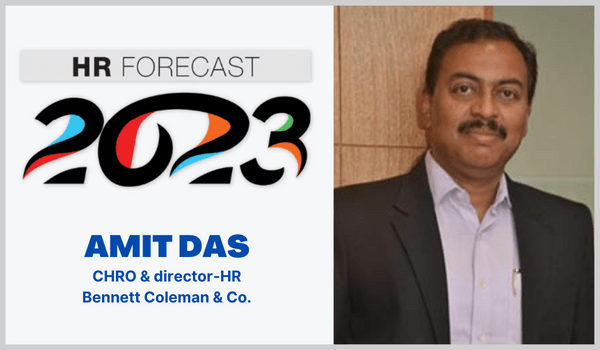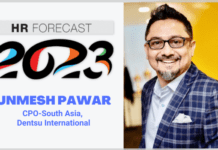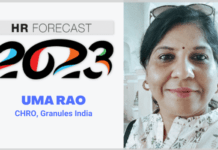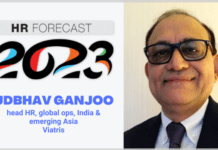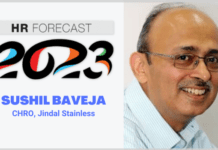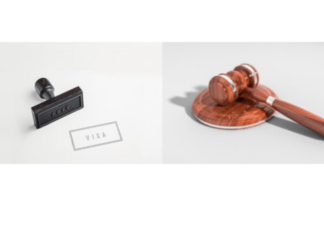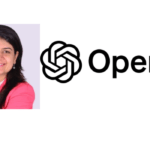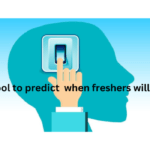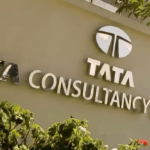2022 was a volatile year for HR & workforce
The Covid pandemic came as a watershed moment and created a scenario in which the business environment and ecosystem had to undergo changes at a much faster rate than before. This gave rise to a prime explanatory framework for the challenges we face-BANI (Brittle, Anxious, Non-linear, Incomprehensible). Brittle because in the new world of work, we are susceptible to catastrophe (disruptions) with severe mid and sometimes long term impact. In this context, jobs are no longer guaranteed, job descriptions are dynamic and career changes are normal. Anxious-because anxiety is one of the most present symptoms today, not just in people’s personal lives but in business as well. We need to make decisions quickly and often with limited data and certainty. Non- linear-is the result of disconnection between cause and effect in time, proportion and perception. What was just complex, has now become nonlinear; multidimensional problems (and context) without a single meaning, leading to multiple destinations. The systems of cause and effect have become disconnected or disproportional. It is also Incomprehensible-since everything happens so fast that it seems we understand less.
A non-linear, incomprehensible world, deepened the feeling of anxiety and brittleness felt by stakeholders and led to some chaotic and knee jerk decision making that seemed right at that moment. The pace at which disruptions and changes affecting organisations and employees accelerated during the pandemic led to a phase of short-term actions taken for mere existence, by all stakeholders. At the first opportunity some of these decisions had to be recalibrated to better reflect, and have a more suitable effect, on existing realities.
While the economy is recovering from the pandemic led crisis, one thing is certain that things won’t return to normal. However, we should reach a stage of new dynamic equilibrium in the future and that would result in having a better clarity of trends for the future, both from organisational as well as employee perspective.
2023: Will it be a turmoil again or peace?
Change is a constant and the pace of disruptions, accelerated during the past couple of years, will continue. Going forward, with faster globalisation, distributed, interdependent, networked and flatter organisation structures, when we have to deal with a multigenerational workforce at our workplace, we need to have much more innovative, agile and authentic leadership. We need to build a culture that encourages co-creation and collaboration amongst employee communities, which will get formed based on shared areas of interest amongst the employees.
Going forward, with faster globalisation, distributed, inter-dependent, networked and flatter organisation structures, when we have to deal with a multi-generational workforce at our workplace, we need to have much more innovative, agile and authentic leadership
Some key focus areas for HR would be –
• Hyper personalisation of benefits and engagement programmes to cater to all segments of a distributed workforce working in a hybrid arrangement
• Provide for agile organisation structures that are modular and provide portfolio career opportunities that encourage intra-prenuers (employee entrepreneurs)
• Build and nurture the talent continuum where there are multiple paths of talent engagement. Engaging platform workers and making their GIGs more lucrative with innovative reward-capability-benefits infrastructure
• Upskilling/ re- skilling across functions to build capacity and capability
• Focus on psychological safety and well- being of employees
HR’s attention on deskless workers or in-office workers
The two sets of workers will require equal attention, but the methodology of engagement will need to be personalised and customised to a high extent. The expectation of personalised offering however is irrespective of the work arrangement and will require careful thought and understanding of needs from all sets of workers. We also need to have a deep understanding of the various channels of engagements possible (physical, digital or phygital) for all the initiatives that we envision and carefully consider the benefits of each mode before we roll out any initiative.
Redesign the workplace for hybrid workforce
The workplace will undergo some changes in order to better leverage technology disruptions accelerated by the pandemic. However, it is the working style which is and will continue to undergo a more profound change. We need to embrace disequilibrium, which will keep people in a state that creates enough discomfort to induce change, but not so much that they give up. We need to encourage creative disruption by allowing employees at all levels to experiment and develop the culture to celebrate failures if that provides learnings and insights.
Future leaders will be acknowledged for demonstrating tenacity during volatility, virtual empowerment, decisional agility, and emotional resilience. We need to have a high degree of adaptability to change while navigating uncharted waters and experiencing new learnings and challenges each day. We must communicate frequently and effectively. There is no such thing as overcommunication. Communication should be repeated and transparent. We should delegate judiciously and cannot shift our focus from strong execution. Leaders must be able to understand various options and identify the right solutions, often in a relatively short span of time.
Countering employee burnout
Employee well-being has gained prominence in recent times, as the pandemic and the disruptions brought about because of it, has re-focussed attention on personal well-being and the well-being of people around us. It is of critical importance that organisations are able to provide a psychological safetynet to its employees. By prioritising your team’s well-being, while maintaining high levels of openness and integrity, one can create a work culture that’s ready to take on whatever the future has in store.
I have always believed and actioned towards employee well-being and wellness at the workplace (the www formula). Burnout can lead to attrition, lack of productivity, performance issues and much more. Hence, employee burnout must be constantly dealt with by HR, functional managers, peers and leaders. At BCCL, we stay committed to the well-being of our employees. For us the balance of the Mind-Body-Soul forms the bedrock of our employee well-being initiatives. On one hand we have provided necessary preventive and curative support to our employees like the best in class medical cover, unlimited doctor consultation, and ‘RedButton’ services for health emergency support towards physical wellness. On the other hand we run constant yoga programmes, exercise schedules, and meditation sessions. We also focus on building financial wellness for our workforce that helps them bring their whole selves to work.
33 leaders predict the upcoming trends for 2023. To find out more click here
Value our content... contribute towards our growth. Even a small contribution a month would be of great help for us.
Since eight years, we have been serving the industry through daily news and stories. Our content is free for all and we plan to keep it that way.
Support HRKatha. Pay Here (All it takes is a minute)





